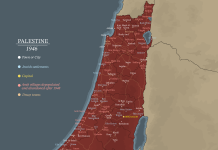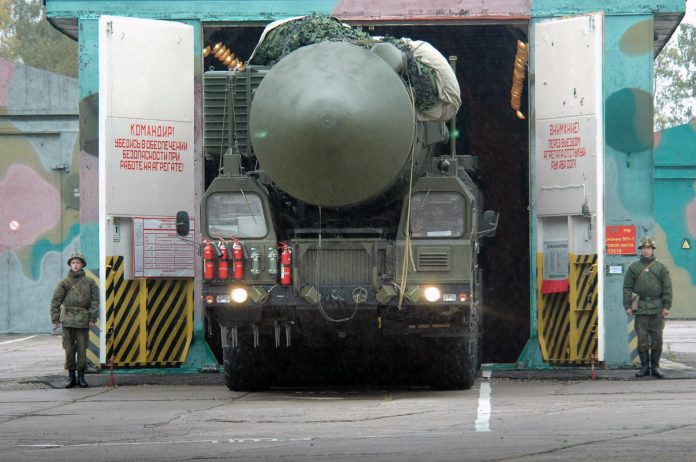In this second part, we turn to the more recent years and examine how nuclear deterrence has influenced foreign policy decisions. This topic, often being somewhat more open to interpretation and frequently shrouded in controversy, I will be sharing my own perspective while also considering the views of esteemed scholars like John J. Mearsheimer and world renowned economist Jeffrey Sachs, who, among many things, also served as an economic advisor to Mikhail Gorbachev and Boris Yeltsin.
As mentioned previously, more countries have joined the exclusive Nuclear Club over the years. Today, there are a total of nine official Nuclear-Weapon States. Of those nine states, only five have NPT status, The United States, Russia, China, France, and The United Kingdom. India, Pakistan, and Israel never joined the NPT. As mentioned before, Israel in particular has never publicly admitted or denied having nuclear weapons, but is universally believed to possess nuclear arms. North Korea joined the NPT as a non-nuclear weapon state but announced its withdrawal from the NPT in 2003. To analyse how nuclear deterrence is used in modern conflicts, let’s have a look at one of the current political hot spots, Taiwan. The main reason the U.S. is unwilling to let go of Taiwan is because of growing Chinese influence in the Asian theatre. The U.S. is currently engaged in a containment strategy against China, who is trying to become a regional hegemon, and Taiwan is a vital puzzle piece in this strategy. The question is, would the U.S. be willing to protect the Taiwanese in case of a Chinese conventional invasion. Here is where deterrence and also nuclear deterrence come into play.
When it comes to conventional deterrence, you have three options. First option, you convince them that a potential attack is going to result in a guaranteed loss on their part. Second option, you make it clear that you may not win, but you’re definitely not going to let them win either, in other words, a lose-lose situation. The third and final option, you convince them that their victory would be a pyrrhic victory, in other words, they would pay such a god awful price to win the war, that it’s simply not worth it. I think the second option links up quite well with the concept of nuclear deterrence and possibly nuclear escalation, with the only difference that the lose-lose scenario would encompass mutually assured destruction. Let’s be frank, neither the Chinese nor the Russians have the military capabilities to defeat the U.S. in a conventional war, so the only real threat is a nuclear war. Generally, a scenario in which a powerful nuclear state is forced to choose between either a nuclear response or an embarrassing retreat should be avoided at all costs. One might think that having nuclear weapons equals to an assured victory, but if both sides have them, it would lead to mutually assured destruction. So with the introduction of nuclear weapons into the military arsenal of great powers, the possibility of war between those great powers may have become less likely because of the fear of potential mutual annihilation, though by no means impossible.
Today, nuclear weapons are more commonly used in manipulation of risk strategies. We had this scenario during the Cold War. The Idea was that if the Warsaw Pact were to invade Western Europe (West Germany), and if NATO was losing the war, we would have used nuclear weapons. Those weapons would not have been directed towards the military, but towards a remote area, in which no side would have suffered any casualties. This demonstration would have been a clear sign to the Warsaw Pact that Europe was dead serious about halting their advancement, putting both sides, as John J. Mearsheimer put it in an interview, on a slippery slope to oblivion. So there is a clear message that the last chance to avoid total Armageddon rested upon them. This is what’s called manipulation of risk strategy, and also what could happen in the conflict with Taiwan and Ukraine. Just the use of a nuclear weapon alone, without any casualties whatsoever, would frighten the living hell out of everybody in an instant because of the threat of nuclear escalation. We know nothing about what a nuclear escalation might look like—thankfully. Therefore, it should be in the interest of all parties to refrain from actions that would bring us closer to such a scenario. Given today’s situation, the Doomsday Clock by the Bulletin of the Atomic Scientists is now set at just 90 seconds before midnight, in which midnight means nuclear war. This is the closest it has ever been.
I believe the main reason why we find ourselves in the current situation is the resistance of the remaining hegemon of a once unipolar world—The United States of America. The U.S. is currently trying to resist existing changes and shifts that seem to be pushing us towards a multipolar world. After the end of the Cold War and the dissolution of the Soviet Union, the U.S. were the sole hegemon in the world. For the better or worse, we all were heavily influenced by U.S. foreign policies. Many international institutions represent an intercontinental reach of U.S. influence, like NATO. More often than not, U.S. supremacy was widely used as a label and excuse to intervene in foreign states, ranging from rigging elections to a variety of regime change operations. Another mistake was their superiority complex with regard to U.S. Russian relations. On February 2, 1990, James Baker, the then U.S. Secretary of State, promised to Gorbachev, that NATO would not expand eastward in change for German reunification. “We understand that not only for the Soviet Union but for other European countries as well it is important to have guarantees that if the United States keeps its presence in Germany within the framework of NATO, not an inch of NATO’s present military jurisdiction will spread in an eastern direction” (James baker, February 9, 1990). The U.S. did not uphold its part of the promise. It started in 1994, with Clinton, making plans on NATO expansion. With 1999 came the accession of Czechia, Hungary, and Poland to NATO, signalling the West’s growing influence in regions once under Soviet influence. Simultaneously, the disintegration of Yugoslavia following the collapse of communism in 1991 left Serbia and Montenegro as the remnants of a fractured federation. This reconstituted Yugoslavia became embroiled in a crisis over Kosovo, a region revered by many Serbs as the cultural and historical heart of their nation.
The push for Kosovo’s independence fuelled unrest, which spiralled into outright conflict. By 1996, the Kosovo Liberation Army (KLA) had taken up arms, pursuing independence through force. Serbia, under Slobodan Milošević’s leadership, responded with brutal crackdowns, escalating the violence further. Diplomatic efforts by the West and Russia aimed to mediate the crisis, but ultimately failed to halt the bloodshed. Against this backdrop, NATO’s intervention became not only a response to the Kosovo conflict but a defining moment in its post-Cold War identity.
Despite NATO’s claim to be a defensive alliance, the decision to bomb Yugoslavia represented a striking shift toward offensive action. Critics argue that the bombing campaign was less about protecting Kosovo and more about sending a decisive message to Milošević, the then President of the Federal Republic of Yugoslavia. This clearly showcased NATO’s willingness to wield force against perceived threats to its values and authority. Over 78 days, approximately 420,000 bombs were dropped on Yugoslav territory, targeting not only military installations but also civilian infrastructure, including schools, hospitals, and other non-combatant sites. These actions, which inflicted heavy civilian casualties and widespread destruction, raised serious questions about the morality and legality of NATO’s intervention.
Another big setback came in 2002 when the U.S. unilaterally walked out of the Anti-Ballistic Missile Treaty (ABM Treaty). This was viewed by Russia as a dire national security threat, because it basically enabled the U.S. to potentially execute a pre-emptive strike, with missiles stationed just a few minutes away from Moscow. Russia also strongly criticized the U.S. decision, framing it as a destabilizing act that undermined the principle of mutual deterrence. Russian President Vladimir Putin described the withdrawal as a mistake that could “trigger a new arms race.” The Kremlin emphasized that the ABM Treaty, signed in 1972, had been a cornerstone of strategic stability during the Cold War by preventing the deployment of missile defence systems that could neutralize the deterrent effect of nuclear arsenals.
Russia itself responded by accelerating its own development of advanced strategic weapons capable of overcoming U.S. missile defences. These included hypersonic glide vehicles, such as the Avangard, and modernized intercontinental ballistic missiles (ICBMs) like the RS-24 Yars. President Vladimir Putin justified these developments as necessary to counterbalance the growing asymmetry introduced by U.S. actions. While Russia portrayed these advancements as defensive, they were viewed in Washington as provocative and destabilizing, contributing to the erosion of arms control frameworks.
Another flashpoint came in 2007 when Russia suspended its participation in the Treaty on Conventional Armed Forces in Europe (CFE). Though not directly related to nuclear arms, this treaty had been critical in maintaining military balance on the continent. Moscow’s suspension was driven, in part, by frustration over NATO’s continued expansion and the U.S.’s perceived disregard for mutual constraints.
Now, looking back in time, it looks as if the U.S. repeatedly tried to forcefully project its influence in a system which seems to be moving towards multipolarity. In this multipolar system, other powerful nation states not only have no intention of letting U.S. foreign policy meddle in their states affairs, but they are also armed with nuclear weapons. Generally, testing the limits of a state, armed with nuclear weapons, is a recipe for disaster. The United States has also unilaterally abandoned critical treaties, such as those aimed at curbing the arms race between itself and Russia, which left Russia with little choice but to follow suit. By opting out of these agreements, the U.S. further accelerated the proliferation of nuclear weapons, pushing both itself and its adversaries toward a more dangerous arms race. In an international system where nuclear deterrence holds the key to security, such actions are reckless.
Everyone knows that the first thing one should focus on when waking up in the morning, besides making a delicious cup of coffee, is to not provoke a nuclear war. Those are the ABC’s of how not to destroy our world, so stop poking the bear.
Now for the one million dollar question, how do we not blow ourselves to bits and pieces and move towards potential nuclear disarmament. I’m not going to pretend to have an answer to this question, to which even the most renowned experts in the world have no clear answer. Nevertheless, I will try my best to give my opinion on this highly complex topic.
President Kennedy demonstrated that even at the height of the Cold War, peace could be achieved through mutual respect and dialogue. His approach, focusing on cooperation, challenging public perceptions, and fostering understanding, stands in sharp contrast to the attitudes of many current leaders. Today, open hostility, dismissive rhetoric, and unilateral actions dominate foreign policy. The United States, for instance, has consistently disregarded Russian interests, breaking commitments such as NATO’s non-expansion and abandoning key arms control treaties. This antagonism extends beyond politics, with cultural boycotts and bans that deepen divides. In the Middle East, a lack of meaningful action to address mass suffering perpetuates violence, while in relations with China, provocative policies heighten tensions unnecessarily. A shift toward peace is both possible and urgent. But before we can even think about peace itself, we have to examine our own attitudes towards peace. Peace does not entitle to the complete defeat and enslavement of non-western cultures who do not enter the spectrum of western liberal democracies. It does not entitle the transformation of every country in the world to the likings of western ideologies. I speak of peace, in which despite our cultural and political differences, we can still respect and tolerate each other. It makes no sense that some world leaders openly insult other world leaders without even a single speck of respect or shame. It makes no sense that some world leaders publicly depict other leaders as the second coming of Adolf Hitler and expect them to cooperate. Furthermore, it is deeply troubling that many in positions of power today appear to have lost sight of the profound responsibility their roles entail and the far-reaching consequences of the decisions they make.
To make steps towards actual peace, there needs to be a solid base built upon mutual respect. Peace is not the achievement of any single nation. It is a collective endeavour that demands shared commitment. At its core, peace requires all parties to respect and uphold each other’s right to self-determination while fostering a spirit of cooperation aimed at building mutual understanding and acceptance. Rather than envisioning peace as a static utopian ideal, I see it as a dynamic process—one where nations address disagreements through dialogue and diplomacy, not through violence or war. A world in which states don’t hide their intentions behind diplomatic smokescreens, but are more transparent with their agendas and concerns. A world in which the concerns of a state are heard and taken serious by other states. A world where mutual tolerance and acceptance can be achieved despite differences in political structures, religion, culture, ideology and world view. Lastly, I want to end it on a quote, made by John F. Kennedy during his commencement address at the American University in Washington, D.C. on June 10, 1963. I believe this captures quite nicely the mindset that current world leaders, governments, politicians, and we as citizens and individuals must embrace to make our world just a slightly better and more appealing place to live in.
There is no single, simple key to this peace–no grand or magic formula to be adopted by one or two powers. Genuine peace must be the product of many nations, the sum of many acts. It must be dynamic, not static, changing to meet the challenge of each new generation. For peace is a process-a way of solving problems.
President John F. Kennedy
With such a peace, there will still be quarrels and conflicting interests, as there are within families and nations. World peace, like community peace, does not require that each man love his neighbor–it requires only that they live together in mutual tolerance, submitting their disputes to a just and peaceful settlement. And history teaches us that enmities between nations, as between individuals, do not last forever. However fixed our likes and dislikes may seem, the tide of time and events will often bring surprising changes in the relations between nations and neighbors.
So let us persevere. Peace need not be impracticable, and war need not be inevitable. By defining our goal more clearly, by making it seem more manageable and less remote, we can help all peoples to see it, to draw hope from it, and to move irresistibly toward it.
Washington, D.C.
June 10, 1963














